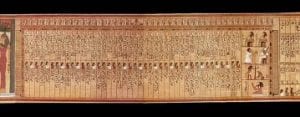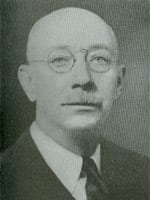
Clements’ Nature and Structure of the Climax was concerned, as one might expect, with the state of climax of vegetation. Clements initially explains what a climax is, followed by issuing a series of questions one would ask when determining whether or not a region constitutes a climax. He goes on to argue in favor of the theory that there is only one real climax and multiple proclimaxes leading up to it. Finally explaining the structure of a climax and the roles of those species involved play.
Having not read a great deal of ecological literature previous to this, I have always imagined climax as a flash in the pan, however, in the case of ecological studies, a climax is when vegetation (over a vast area, in this reading at least) reaches a state of equilibrium. For example, a climax may be the entirety of the Great Plains in North America; every year the same plant life is dominant throughout the entirety of that area. The term biome is used instead when one is referring not only to vegetation but also animal life in a region.
Clements lays out at least four “tests” of a climax. To qualify as a climax a region must be characterized by the same form in the dominants i.e. to be considered part of a grassland climax, the dominant type of vegetation must be grass throughout. No region in which trees are dominant can be considered a portion of the grassland dominant. A region also must have the presence of the same dominant species in all or nearly all of the associations (a subdivision of a climax). Subdominants are used to link associations together, and some animals may be used as indicators too, particularly smaller, less mobile animals.
The essay goes on to argue that contrary to what Tansley said in my previous reading, there is only one kind of climax. Climax can only be used to define an area if it is one in which a community is “capable of maintaining itself under a particular climate, except where a disturbance enters.” Meaning that except in the case of the addition of a variable such as human interference, forest fire, or mass migration, a region is in a state of dynamic equilibrium. Anything appearing to be a climax that does not fit this criteria should be considered a “proclimax” defined as resembling the climax in one or more respects but gradually replaced by the latter. Of proclimaxes there are four types; subclimax, dis-, pre-, and post-. The definitions of disclimax and subclimax are clearest and best address arguments made by Tansley in 1935. Tansley referred to a “mowing” or “grazing” climax, one in which the interaction of an outside force such as a human cutting down grass or a herd eating it, reaches a sort of equilibrium with the plant life. Clements would refer to this as a disclimax, a subversion of the typical climax or succession to the climax. A preclimax is an apparent climax before the climatic climax, perhaps the climax of a particular phase of succession, or the climax of vegetation shortly after a fire, before the typical dominant again matures in the area.
Having thoroughly argued for how a climax should be described, Clements goes on to explain the structure and rolls within a climax. A dominant is the most abundant and controlling species in a climax, by which, it seems, a climax is defined. A subdominant is any species that is not the dominant. The influents are the animal species of a biome, so called because of their influence on vegetational life. The units of a climax, in descending order of importance, are, association, consociation, faciation, lociation, society, and clan. I won’t here define each, but suffice it to say that each is smaller in size than the one before and with each grade the degree of diversity allowed is greater. A more full explanation is in my notes from this reading and the most complete explanation is the text itself.
I am glad to have read this and to have more of the terms I expect to find useful defined. I agree with Gleason’s (1926) arguments as to the difficulty in defining an association or climax, though, as I mentioned in my writing about that essay I understand the utility of these definitions. If these terms are the ones we are going to be using in class, I will need to take place in a discussion about them before I feel confident enough in their meanings to use them. Regarding Clements specific argument as to the only type of climax being that of climatic climax, I disagree somewhat, as it seems to entirely ignore human interaction with the environment. I would argue that when it comes to growing crops or grazing a herd, there is an equilibrium, though a more curated one than exists in nature.
Regarding the writing in this essay, it was far more confusing than Tansley (1935) and Gleason(1926). The multitude times Clements gave examples of his theories in nature including species names may have been very helpful to someone with more information regarding those species and regions, but to me they were only confusing. Having enjoyed reading the essays by Tansley and Gleason which both refuted some of the ideas Clements had previously written, I had hoped this essay would have addressed them somewhat. Instead, Clements references The Use and Abuse Vegetational Concepts and Terms only one time, and not in any too meaningful capacity, and Gleason not at all. Of the 36 works referenced in this essay a full 11 of them are works that Clements himself is author or coauthor of. Not being well versed in ecological thought of the time I may be mistaken, but I find this absence of debate somewhat disappointing.









